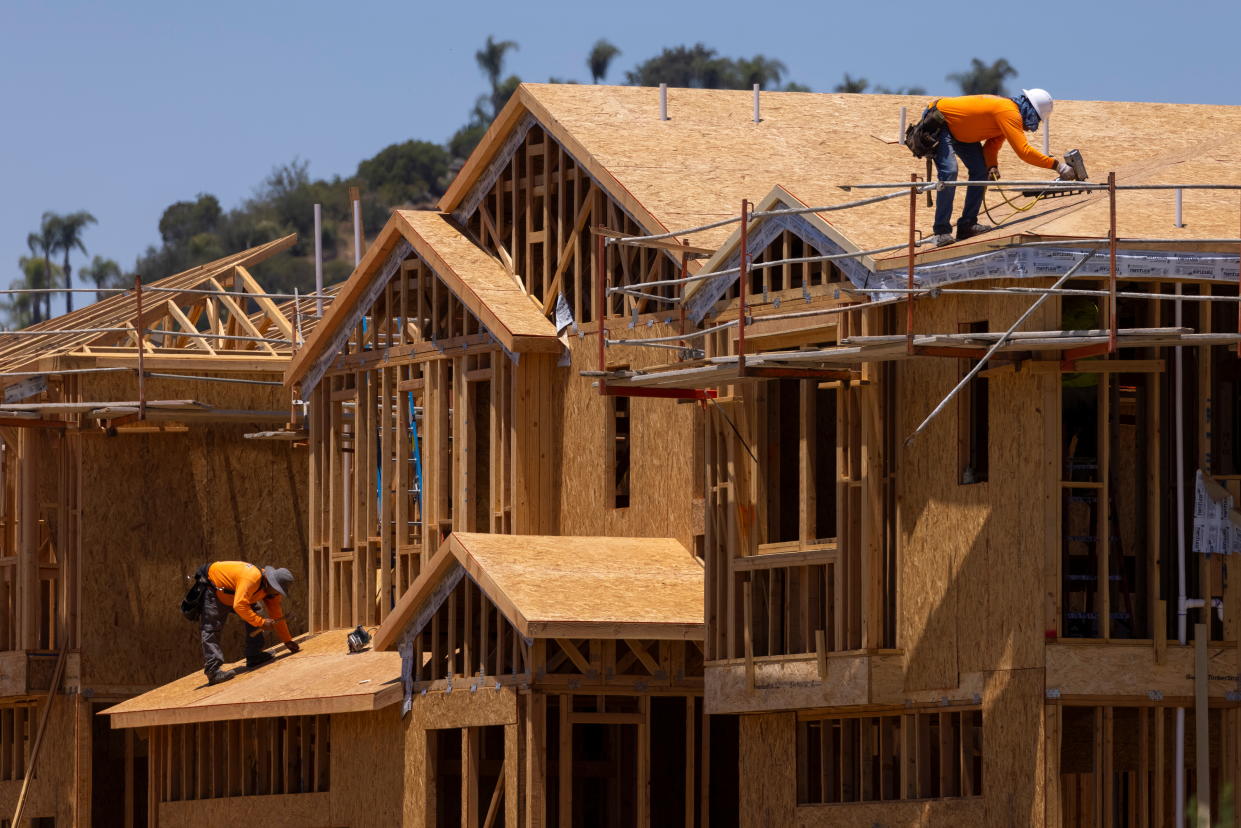GDP: US economy grows 1.1% in Q1, slower than expected
U.S. economic activity grew at a slower pace than expected in the first quarter of 2023, flashing further signs that the economy is slowing down as recession fears swirl and the Federal Reserve considers more interest rate increases.
The Bureau of Economic Analysis' advance estimate of first quarter U.S. gross domestic product (GDP) showed the economy grew at an annualized pace of 1.1% during the period, slower than consensus forecasts. Economists surveyed by Bloomberg had the U.S. economy growing at an annualized pace of 1.9% during the first three months of 2022.
The print came in significantly cooler than the previous two quarters, which saw annualized growth at 2.9% and 3.2% respectively.

The BEA attributed the quarterly slowdown to wholesale trade, headlined by machinery, equipment and supplies, and manufacturing. A slowdown in single-family construction also propelled the decline in growth rate, per the BEA.
Meanwhile, growth in consumer spending in goods and services helped keep annualized growth positive for the quarter. Motor vehicles and parts led goods spending while healthcare and food services and accommodations led services.
Overall, the slowdown in GDP is in line with other recent economic data and weakening consumer confidence about the economy. Oxford Economics lead US economist Michael Pearce had noted prior to the report that most of the growth would come in the early part of the first quarter. March retail sales came in lower than expected, and some executives have recently said on earnings calls they're starting to see demand slow down within their businesses.
"The consumer ended the quarter on a sour note, calling into question the sustainability of economic growth moving forward," Morning Consult Chief Economist John Leer said Thursday. "While private investment may pick back up later this year, it tends to be highly volatile from quarter to quarter. Without a robust consumer, we’re likely to see more volatility and uncertainty in economic activity through the end of the year."
The first quarter was likely the high water mark for economic growth, according to Oxford Economics. The research team sees marginal GDP growth in the second quarter followed by a recession in the back half of 2023.
"Growth risks are tilted decidedly to the downside as the drivers that buoyed activity at the start of 2023 lose steam while the crunch from tighter credit conditions could be more severe than we've already factored into our forecast," Oren Klachkin, Oxford Economics' lead US economist, wrote in a note to clients on Thursday.
The report also revealed a 4.9% increase in the personal consumption expenditures price index, excluding food and energy prices. Economists surveyed by Bloomberg had expected a 4.7% increase. The index, known as Core PCE, is a closely watched inflation gauge for the Federal Reserve.
Josh is a reporter for Yahoo Finance.
Read the latest financial and business news from Yahoo Finance
